| Pages:
1
2 |
wessonsmith
Hazard to Others
  
Posts: 203
Registered: 15-2-2018
Location: elsewhere
Member Is Offline
|
|
Paper Detonator #8 Power!
I want to circle back and reintroduce my "firecracker Mix" as a legitimate paper tube detonator.
I have done some more testing, and the results are undeniable. The properly heat treated mixture flawlessly functions as a high energy detonation
source. The test involves a very watered-down version of my ETN plastic, 80% ETN & 20% polymer matrix. I did this to decrease the sensitivity to
the point where it's on par with something like Semtex 1A, which contains 17% polymer matrix. I am extrapolating my figures from these papers:
RDX-C4 (p.780)
https://pdfs.semanticscholar.org/de2b/cc1f14ee15cbac5252fd97...
Semtex (p.3)
https://www.researchgate.net/publication/277341420_Character...
PETN/ETN (p.7)
http://www.wydawnictwa.ipo.waw.pl/cejem/vol_14_No_2_Early_Vi...
Detonator requirements: (p.21 - 22)
https://explosia.cz/app/uploads/2017/11/Explosives-catalog-2...
My plastic tested(80%):
Impact Sensitivity (J): 20
Friction Sensitivity (N): 180
Requires #8 power detonator
PETN based plastic (86%):
Impact Sensitivity (J): 13.9
Friction Sensitivity (N): 176
Requires #8 power detonator
RDX-C4(91%):
Impact Sensitivity (J): 21.1
Friction Sensitivity (N): 214
Requires #8 power detonator
Semtex 1A(83%%):
Impact Sensitivity (J): 21.1
Friction Sensitivity (N): 187
Requires #8 power detonator
Semtex 10(86%):
Impact Sensitivity (J): 15.7
Friction Sensitivity (N): 204
Requires #8 power detonator
PETN:
Impact Sensitivity (J): 3.93
Friction Sensitivity (N): 75.1
ETN:
Impact Sensitivity (J): 3.28
Friction Sensitivity (N): 38.9
As the video clearly shows, the plastic detonated. It detonated even though it was applied to the shaft of the tube, without any compression holding
it on. Anyone who has an understanding of initiating explosives knows that for the plastic to detonate in this manner, the brisance must be very
high. Fast enough to initiate the plastic before the pushing force of the explosion pushes the plastic out of the way.
As mentioned previously, the process of manufacture is amazingly simple. Place the powder into a paper tube sealed at one end with hot glue and
compact the powder with wooden dowl. Place the paper tube into a NON-FLAME heat source and heat at 185F for 10min. That's it. Add a fuse and seal
with hot glue.
What are your thoughts?
Link to video test:
https://youtu.be/N71NYIBL8Zo
Remember that's a 12 Kg steel plate.
[Edited on 17-7-2019 by wessonsmith]
|
|
|
underground
National Hazard
   
Posts: 692
Registered: 10-10-2013
Location: Europe
Member Is Offline
|
|
It is indeed very interesting primary and i am sure it is going to be used more in the near future. Really good job.
|
|
|
Laboratory of Liptakov
International Hazard
    
Posts: 1335
Registered: 2-9-2014
Location: Technion Haifa
Member Is Offline
Mood: cool.gif
|
|
For someone can be NHN difficulty available. But if it works as sintered powder in paper tube, is it a new invention. Appropriate name can be sintered
detonator. It describes the essence of the new composition. We thanks for sharing. Very interest...... ...LL ...LL
Still some penetration through 2mm steel plate and the invent will be complete.
Development of primarily - secondary substances CHP (2015) Lithex (2022) Brightelite (2023) Nitrocelite (2024)
|
|
|
wessonsmith
Hazard to Others
  
Posts: 203
Registered: 15-2-2018
Location: elsewhere
Member Is Offline
|
|
Quote: Originally posted by Laboratory of Liptakov  | For someone can be NHN difficulty available. But if it works as sintered powder in paper tube, is it a new invention. Appropriate name can be sintered
detonator. It describes the essence of the new composition. We thanks for sharing. Very interest...... ...LL ...LL
Still some penetration through 2mm steel plate and the invent will be complete.
|
I have some more testing to do. Thanks for the feedback!
| Quote: |
It is indeed very interesting primary and i am sure it is going to be used more in the near future. Really good job.
|
I hope people start using it. Much safer than most primaries out there with the exception of LL's CHP.
[Edited on 18-7-2019 by wessonsmith]
|
|
|
wessonsmith
Hazard to Others
  
Posts: 203
Registered: 15-2-2018
Location: elsewhere
Member Is Offline
|
|
Heat Transference
So, I have done so more testing, and I see some unusual results.
Here are the results of a 1.15g Sintered detonator on a 2mm aluminum bar.
https://drive.google.com/drive/folders/1meCgi56FkcxD__jHAQcF...
My experience with ordinary tiered detonators, like my ( NHN, powdered ETN, Melt-cast ETN detonators), is they have a build-up of power as the
detonation wave travels the column. With the sintered detonator, I do not see a build-up up power. It's as if the entire column is going off at
once. Here is a quick video of how the sintered composition transfers heat throughout the column.
https://youtu.be/piRqKEGbN58
As we all know, if you wrap a small amount of explosive in aluminum foil and heat it, it will detonate. I think a similar thing is happening with my
sintered composition. It seems that once the NHN within the composition starts to burn, the massively high temperature of the NHN combustion is
instantly transferred down the column of the sintered composition, causing all of the ETN to detonate at once, which in turn causes the remaining NHN
also to detonate.
The very fine voids throughout the sintered detonator column are mandatory for this to work. Without the voids, the composition burns violently with
only a deflagration. Here is the zoomed-in picture of the voids throughout the sintered composition.
https://drive.google.com/file/d/1xePesyF4VLQkyfDQUZfJOAMNS3u...
[Edited on 25-7-2019 by wessonsmith]
|
|
|
Loptr
International Hazard
    
Posts: 1347
Registered: 20-5-2014
Location: USA
Member Is Offline
Mood: Grateful
|
|
What is the composition of your power mix for the detonator. I cant seen to find anyplace where you talked of it previously.
"Question everything generally thought to be obvious." - Dieter Rams
|
|
|
wessonsmith
Hazard to Others
  
Posts: 203
Registered: 15-2-2018
Location: elsewhere
Member Is Offline
|
|
Quote: Originally posted by Loptr  | | What is the composition of your power mix for the detonator. I cant seen to find anyplace where you talked of it previously. |
60/40 ETN/Nickel Hydrazine Nitrate(NHN). Heat treated 185F for 10min.
|
|
|
wessonsmith
Hazard to Others
  
Posts: 203
Registered: 15-2-2018
Location: elsewhere
Member Is Offline
|
|
More Testing
Here are some more pics.
.440mg ETN Plastic(87%), 2mm Aluminum plate, 1.15g Sintered Detonators.
https://drive.google.com/open?id=1i_wDSdCgXXIxVrLL52ohrfsv-8...
I Just tried a variation of my sintered detonator. I put 500mg of powdered ETN in the bottom and then 650mg of the sintered composition on top in the
cardboard tube. It was heat treated as before. The ETN did not detonate. The sintered composition did detonate but it did not transfer the energy
downward.
I have seen a similar issue when placing the detonator upright into the plastic explosive. A normal detonator will detonate the plastic even if it is
just sitting on top of the plastic. The downward shockwave is enough to detonate. With the sintered detonator, the plastic must be in contact with
the sides of the tube in order for it to detonate.
[Edited on 26-7-2019 by wessonsmith]
|
|
|
wessonsmith
Hazard to Others
  
Posts: 203
Registered: 15-2-2018
Location: elsewhere
Member Is Offline
|
|
Major Sintered detonator UPDATE!!!!
So I finally got it figured out. I had hoped to have a melt-cast ETN base with a sintered comp initiator in a cardboard tube. I tried a variety of
different solutions to get it to work without any luck.
I tried using NHN only on top of the melt-cast ETN, FAIL. I tried using the sintered comp on top of the melt-cast ETN, FAIL. I realized that the
melt-cast ETN base was, of course, remelting while I was sintering the comp on top and that the ETN was absorbing up the channel into the sintered
comp making it not detonate. I then tried putting some plastic wrap between the melt-cast ETN and the sintered comp, FAIL.
I was able to back add an already sintered piece of the composition with the melt-cast ETN at the bottom of another tube. That worked, but I didn't
like the idea of having to cut out and then reinsert that sintered piece into the other tube.
The trick that works 100% of the time is to place the 800mg of ETN into the tube, heat it at 185F for 15 min. Let it cool. Then add 100mg of NHN as a
buffer then add 600mg of the sintered comp on top of that. Heat for 10min at 185F. This new arrangement is considerably more potent
than just the sintered comp, in fact, it is now as powerful as the US Army Special Blasting Cap. This is all initiated by a simple Visco fuse while
safely enclosed in a cardboard tube with a hot glue seal. No shrapnel.
To be clear, this is 800mg of melt-cast ETN going BANG!. No other secondary will be as powerful inside a cardboard tube due to the inability to
achieve a high density because of the inherent weakness of the paper tube. In other words, you can't press anywhere near the 1.7 g/cm³ of melt-cast
ETN inside a cardboard tube.
Yes, you can place HMTD or LA/LS on top of the melt-cast ETN, but then you would lose the safety of using the relatively insensitive ETN and sintered
comp.
The picture(s) is of a 3.2mm aluminum plate defeated by this new cardboard tube detonator.
https://drive.google.com/open?id=1SHErUu4ZlsSHw7R-3gcqEPoBIt...
[Edited on 28-7-2019 by wessonsmith]
|
|
|
XeonTheMGPony
International Hazard
    
Posts: 1636
Registered: 5-1-2016
Member Is Offline
Mood: No Mood
|
|
No other secondary will be as powerful inside a cardboard tube due to the inability to achieve a high density because of the inherent weakness of the
paper tube. In other words, you can't press anywhere near the 1.7 g/cm³ of melt-cast ETN inside a cardboard tube.
^^^^^^^^^^^^^^^^^^^^^^^^^^^^^^
Well you can easily do this actually. it is a called a die.
|
|
|
wessonsmith
Hazard to Others
  
Posts: 203
Registered: 15-2-2018
Location: elsewhere
Member Is Offline
|
|
Quote: Originally posted by XeonTheMGPony  | No other secondary will be as powerful inside a cardboard tube due to the inability to achieve a high density because of the inherent weakness of the
paper tube. In other words, you can't press anywhere near the 1.7 g/cm³ of melt-cast ETN inside a cardboard tube.
^^^^^^^^^^^^^^^^^^^^^^^^^^^^^^
Well you can easily do this actually. it is a called a die. |
Easily do this? Can you give me an example of how you would set that up? Without crushing the cardboard tube? Thanks.
As the detonator stands now, it has a number. 8 strength+ and very easy to manufacture.
Here is an example of a company making #8 strength detonators using an aluminum tube and all the steps they must go through to get it to be powerful
enough. Mine, you just place in an oven for a few minutes.
http://energetixsolutions.com/detonator/
I think you are overestimating the ease at which you can achieve uniform density and a density high enough for #8 strength.
Just curious, do you actually manufacture explosives yourself?
[Edited on 28-7-2019 by wessonsmith]
|
|
|
twelti
Hazard to Others
  
Posts: 217
Registered: 20-2-2019
Member Is Offline
|
|
Is he not referring to the idea of pressing the ETN in a stronger tube (Die), then putting it into the paper tube?
|
|
|
XeonTheMGPony
International Hazard
    
Posts: 1636
Registered: 5-1-2016
Member Is Offline
Mood: No Mood
|
|
Quote: Originally posted by twelti  | | Is he not referring to the idea of pressing the ETN in a stronger tube (Die), then putting it into the paper tube? |
Yes you have your die, usually metal that you place your cartridge is in, then press in increments
| Quote: |
I think you are overestimating the ease at which you can achieve uniform density and a density high enough for #8 strength. |
No, it is simply skill from doing so many, I know how easy it is once you have taken the time to make the tools you need. As well as the many many
methods you can use.
Same way how I know it doesn't matter how insensitive your primary or how sensitive it is, what really matters is how you handle it and how well you
get to know it. The safety is in the person, never the substance.
| Quote: |
Just curious, do you actually manufacture explosives yourself? |
Oh just simple e matches
(Inside the dets!)
I have made more then a few things, some even rocket powered. I may be short on words but I am not speaking from ignorance.
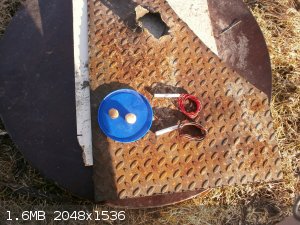 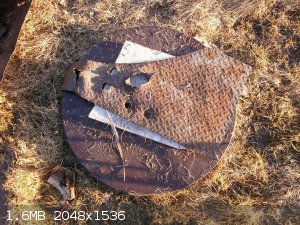
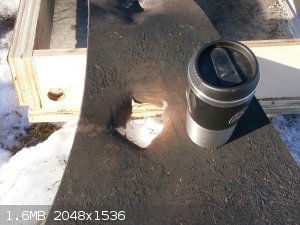 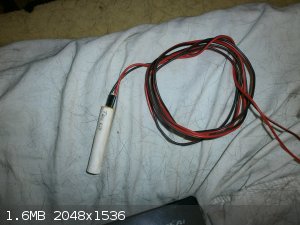 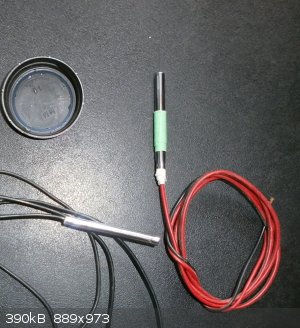 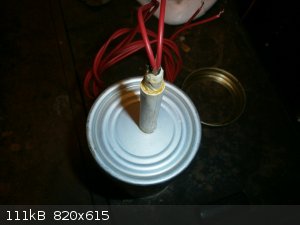
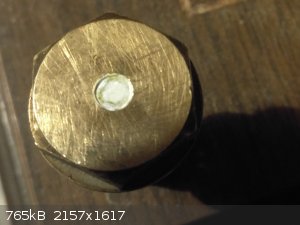 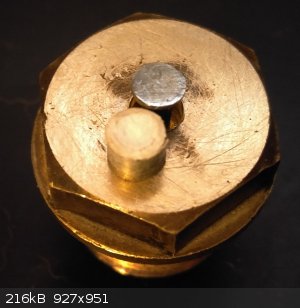 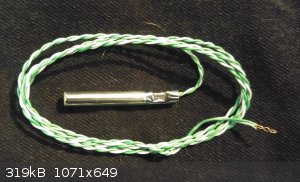 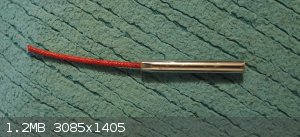 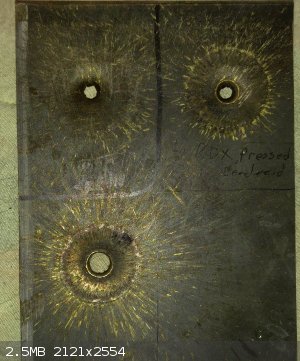
[Edited on 28-7-2019 by XeonTheMGPony]
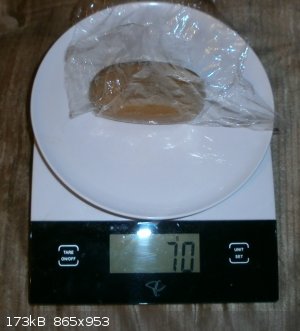 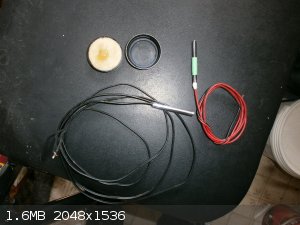 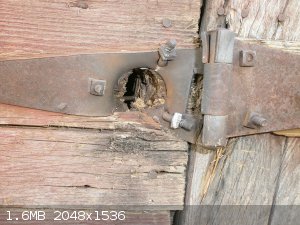
[Edited on 28-7-2019 by XeonTheMGPony]
|
|
|
wessonsmith
Hazard to Others
  
Posts: 203
Registered: 15-2-2018
Location: elsewhere
Member Is Offline
|
|
I guess what I was saying was that melt-cast ETN is the only explosive that you can place into a cardboard tube DIRECTLY and achieve high density.
Not sure why I would go through the process of pressing and explosive like RDX in a metal tube and then transfer the explosive to paper. I am aware
that you can press powders and explosives in dies to use in detonators. Think Tetryl pellets or TATB in insensitive munitions.
The whole point of my cardboard detonator was to make something VERY powerful, SIMPLE to manufacture and VERY safe, relative to most detonators based
on sensitive primaries. I also make metal-based detonators, and of course, you can achieve high density by pressing the explosive in those.
What primaries are you nonmetal detonators based on?
[Edited on 28-7-2019 by wessonsmith]
|
|
|
XeonTheMGPony
International Hazard
    
Posts: 1636
Registered: 5-1-2016
Member Is Offline
Mood: No Mood
|
|
You place the paper tube into the metal die, you then press the explosives then eject the loaded tube.there is no other transfers.
use what ever comp you wish.
I use a long strip of printer paper, then use a bit of glue to make the tube.
they where effective for what they where but to me there was no useful advantage over the bog standard used in industry.
But good luck on it, if there is some where I can assist in fabrication will let you know.
Safety is in the person, when ever you make some thing idiot proof nature makes a better idiot! Just keep this in mind.
you see int he azide pellet press I used a second pin to eject the finished pellet, Opt 2 is a slide plate then use the same pressing piston to eject
the cartridge.
I use 80 PVA-lead azide, 20 Lead styphnate pressed into a paper shell, this is then pressed over 500mg of ETN, or RDX/ETN
Specialty caps for me is the full 1gram of base charge.
Preferred is Chromed Brass, but I am using 6mm aluminium atm
Igniter is Nichrom doped in nitro lacquer and lead styphnate
[Edited on 28-7-2019 by XeonTheMGPony]
|
|
|
VSEPR_VOID
National Hazard
   
Posts: 719
Registered: 1-9-2017
Member Is Offline
Mood: Fullerenes
|
|
I wish I knew more about energetic materials. Not one of those topics you can get into experimenting with easily, or without lots of educational
preparation.
Within cells interlinked
Within cells interlinked
Within cells interlinked
|
|
|
wessonsmith
Hazard to Others
  
Posts: 203
Registered: 15-2-2018
Location: elsewhere
Member Is Offline
|
|
Quote: Originally posted by VSEPR_VOID  | | I wish I knew more about energetic materials. Not one of those topics you can get into experimenting with easily, or without lots of educational
preparation. |
I got into energetics in 2016. I had no prior experience and have no formal training/education in chemistry or explosives. I used the internet and
watched some YouTube videos and read scientific papers and patents on explosives. The information is out there. Just take your time to learn about
the materials you want to play with.
|
|
|
wessonsmith
Hazard to Others
  
Posts: 203
Registered: 15-2-2018
Location: elsewhere
Member Is Offline
|
|
*** Cardboard Tube Detonator ***
It is important to remember that my cardboard tube detonator is based on 'secondary-like' energetics. There is no shrapnel concern,
and the manufacture of the detonator is very straight forward, no dies, etc. The trick to this detonator is the Sintered composition, which
can detonate with minimal confinement. The detonator is 8.5mm x 50mm and weighs only 3g yet packs a #8 strength punch!
One could use VERY sensitive primaries like LA/LS or DBX-1. However, that would mean using primaries that are nearly 80x more
sensitive than my Sintered composition. The purpose of this invention was to avoid having to use such sensitive primaries. My Sintered
Cardboard Tube Detonator does precisely that.
FYI shout out to LL for giving the name Sintered Composition.
|
|
|
XeonTheMGPony
International Hazard
    
Posts: 1636
Registered: 5-1-2016
Member Is Offline
Mood: No Mood
|
|
Quote: Originally posted by wessonsmith  | It is important to remember that my cardboard tube detonator is based on 'secondary-like' energetics. There is no shrapnel concern,
and the manufacture of the detonator is very straight forward, no dies, etc. The trick to this detonator is the Sintered composition, which
can detonate with minimal confinement. The detonator is 8.5mm x 50mm and weighs only 3g yet packs a #8 strength punch!
One could use VERY sensitive primaries like LA/LS or DBX-1. However, that would mean using primaries that are nearly 80x more
sensitive than my Sintered composition. The purpose of this invention was to avoid having to use such sensitive primaries. My Sintered
Cardboard Tube Detonator does precisely that.
FYI shout out to LL for giving the name Sintered Composition. |
shrapnel is negligible, just the pressure wave will do damage if close enough.
this is what I am trying to teach you, it can be sand for all the matter, if it is handled carelessly it can hurt you, all safety at every point of
life begins between the ears of the person.
So as I said treat every thing as if it where sensitive, especially molten ETN as now you are asking it to explode if there is any impurities that
should aggravate it. Pressing is 10000% times safer then heating any explosive.
Do keep these facts in mind.
I been playing with this stuff since 1990's, you learn handling + Understanding superceeds every thing ells in terms of safety.
Good luck on your venture, make standards, refine them, then each step build on top of this standard. Having a clear design, and a held to standard
all so improves safety and reliability
|
|
|
wessonsmith
Hazard to Others
  
Posts: 203
Registered: 15-2-2018
Location: elsewhere
Member Is Offline
|
|
Quote: Originally posted by XeonTheMGPony  | Quote: Originally posted by wessonsmith  | It is important to remember that my cardboard tube detonator is based on 'secondary-like' energetics. There is no shrapnel concern,
and the manufacture of the detonator is very straight forward, no dies, etc. The trick to this detonator is the Sintered composition, which
can detonate with minimal confinement. The detonator is 8.5mm x 50mm and weighs only 3g yet packs a #8 strength punch!
One could use VERY sensitive primaries like LA/LS or DBX-1. However, that would mean using primaries that are nearly 80x more
sensitive than my Sintered composition. The purpose of this invention was to avoid having to use such sensitive primaries. My Sintered
Cardboard Tube Detonator does precisely that.
FYI shout out to LL for giving the name Sintered Composition. |
shrapnel is negligible, just the pressure wave will do damage if close enough.
this is what I am trying to teach you, it can be sand for all the matter, if it is handled carelessly it can hurt you, all safety at every point of
life begins between the ears of the person.
So as I said treat every thing as if it where sensitive, especially molten ETN as now you are asking it to explode if there is any impurities that
should aggravate it. Pressing is 10000% times safer then heating any explosive.
Do keep these facts in mind.
I been playing with this stuff since 1990's, you learn handling + Understanding superceeds every thing ells in terms of safety.
Good luck on your venture, make standards, refine them, then each step build on top of this standard. Having a clear design, and a held to standard
all so improves safety and reliability |
I appreciate your points. The main reason for my experimentation is safety. No matter how experienced we get or how streamlined our process becomes,
there is no getting around the sensitivity of the explosives used. The more sensitive the explosive is the more risk there is!
I disagree with your pressing vs. melting. Melt-casting ETN at the temperatures I am using, and with the non-interactive process
that I employ while it's molten, eliminates any chance of an accidental detonation. I also disagree with the shrapnel being negligible. I have had
experience myself when I was testing some metal detonators. I was doing a sympathetic detonation test and didn't realize one of the detonators I was
testing had been uncovered by sand. The fuse was lit and when it detonated, the shrapnel came flying through my heavy plastic can, almost striking
me. Yes, it was my fault but the cardboard tube would have eliminated that POTENTIAL danger.
I am responsible for the quilty of the ETN I use, which means ensuring that it is acid-free. There is no denying that NHN is vastly
less sensitive to friction than LA/LS, HMTD, etc. To me, that is a huge deal. I have no doubt that you have created a system for yourself where you
can load your detonators using LA/LS were you have also minimized your risk. For me, however, the sensitivity of those primers, including the newer
DBX-1 are way too sensitive.
My sintered detonator is DEADLY if miss-handled, just like any other detonator! The energetics that I employ have sensitivity thresholds that are
nearly 80x less sensitive to friction than most other primaries currently being used. By using these less sensitive energetics, my
margin for error widens. This isn't to suggest, however, that I can be sloppy or careless or lazy when working with them.
Good luck with your endeavors.
[Edited on 29-7-2019 by wessonsmith]
|
|
|
XeonTheMGPony
International Hazard
    
Posts: 1636
Registered: 5-1-2016
Member Is Offline
Mood: No Mood
|
|
Good, that allays any concerns , but my point is for others reading as well.
When you think of it as safe because of X is when you find your self wondering where your hand went.
I use a dash of urea when recrystallizing my ETN as an acid scavenger, and usually do it twice, once to purify then again to modify crystal form. 1%
based on weight for the second recrystallization.
|
|
|
wessonsmith
Hazard to Others
  
Posts: 203
Registered: 15-2-2018
Location: elsewhere
Member Is Offline
|
|
Quote: Originally posted by XeonTheMGPony  |
When you think of it as safe because of X is when you find your self wondering where your hand went.
I use a dash of urea when recrystallizing my ETN as an acid scavenger, and usually do it twice, once to purify then again to modify crystal form. 1%
based on weight for the second recrystallization. |
My sintered detonators are SAFER than detonators that use very sensitive primaries. They are safer to manufacture and
safer to use. That is just a fact, a fact for others to read as well. My detonators, however, are NOT safe. Any
detonator can and will kill you if you carelessly use them!
FYI, Urea doesn't mix well with HTPB. So if you make plastic using HTPB, don't use Urea to stabilize, it will degrade your plastic within a few days.
It will go from that beautiful light buff color to an ugly brown. ETN is quite easy to stabilize by recrystallizing and using Ammonium Carbonate. Get
rid of the acid and ETN will be good for years!
[Edited on 29-7-2019 by wessonsmith]
|
|
|
VSEPR_VOID
National Hazard
   
Posts: 719
Registered: 1-9-2017
Member Is Offline
Mood: Fullerenes
|
|
Quote: Originally posted by wessonsmith  | Quote: Originally posted by VSEPR_VOID  | | I wish I knew more about energetic materials. Not one of those topics you can get into experimenting with easily, or without lots of educational
preparation. |
I got into energetics in 2016. I had no prior experience and have no formal training/education in chemistry or explosives. I used the internet and
watched some YouTube videos and read scientific papers and patents on explosives. The information is out there. Just take your time to learn about
the materials you want to play with. |
"And that is how I lost my other eye" - Me, 2035
Within cells interlinked
Within cells interlinked
Within cells interlinked
|
|
|
Microtek
National Hazard
   
Posts: 827
Registered: 23-9-2002
Member Is Offline
Mood: No Mood
|
|
Wessonsmith, where did you get your HTPB? I have been looking for that for some time.
|
|
|
twelti
Hazard to Others
  
Posts: 217
Registered: 20-2-2019
Member Is Offline
|
|
How does the HTPB compare to styrene butadiene? I have some of that, from a commercial adhesive product mentioned by Quicksilver in his ETN_
Notes-2006 doc.
|
|
|
| Pages:
1
2 |